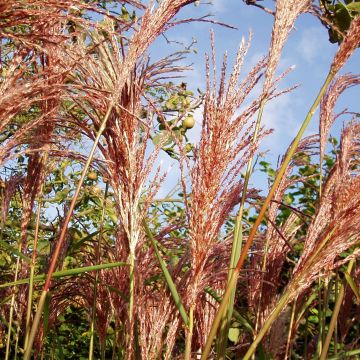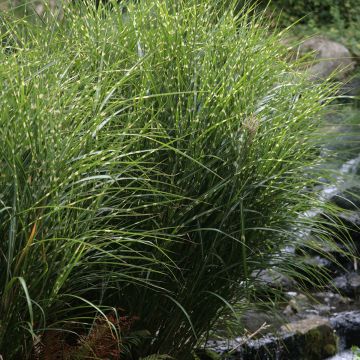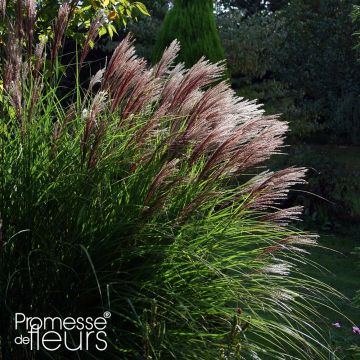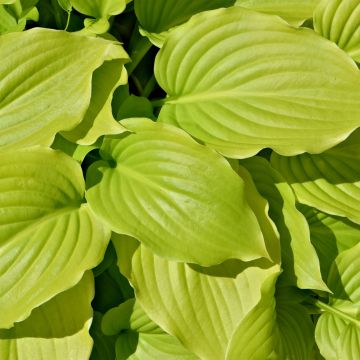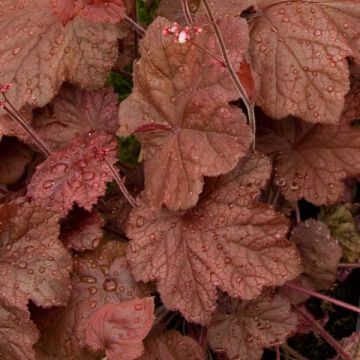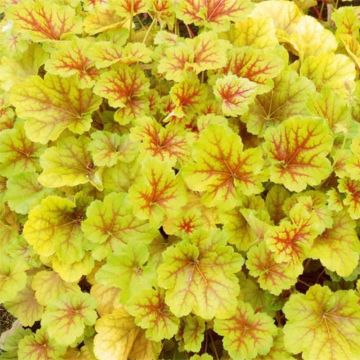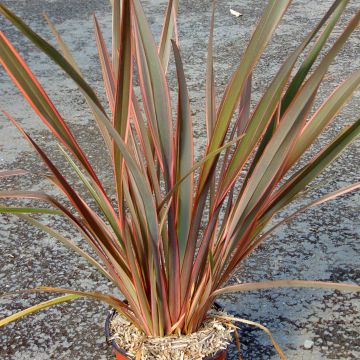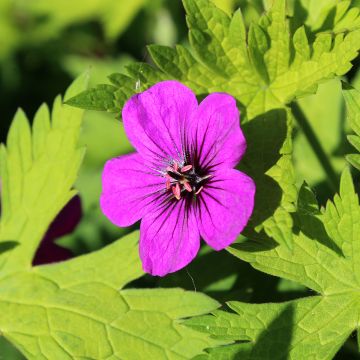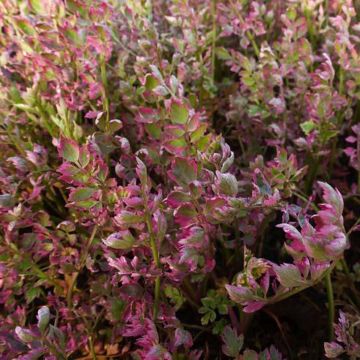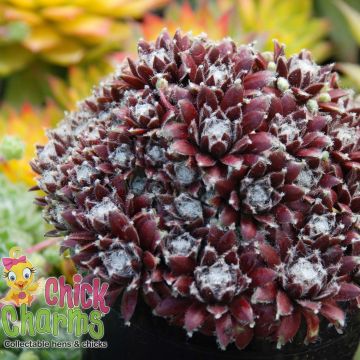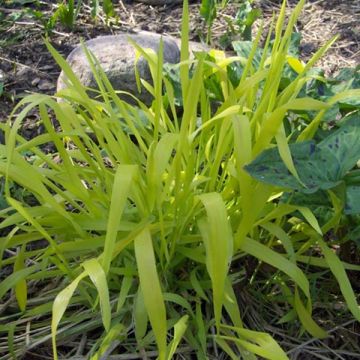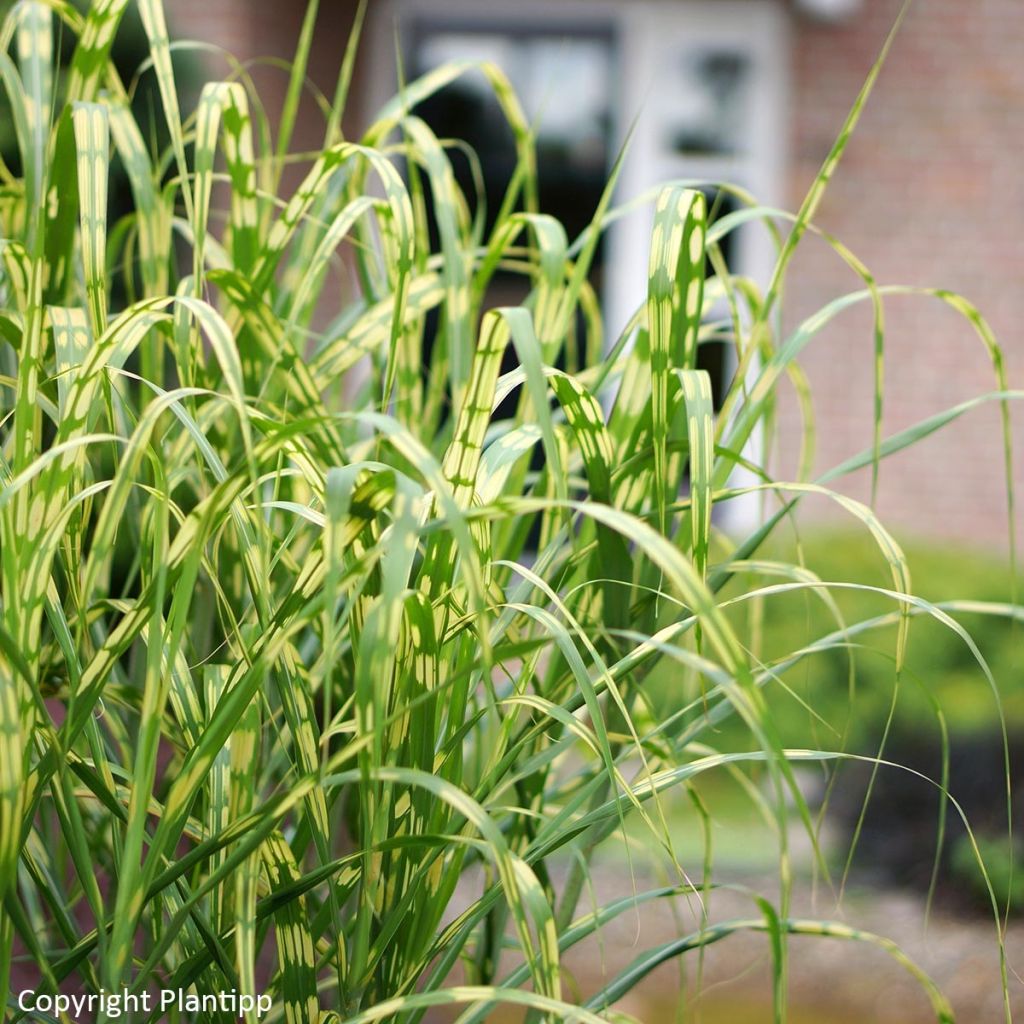

Miscanthus (x) giganteus Alligator - Roseau de Chine
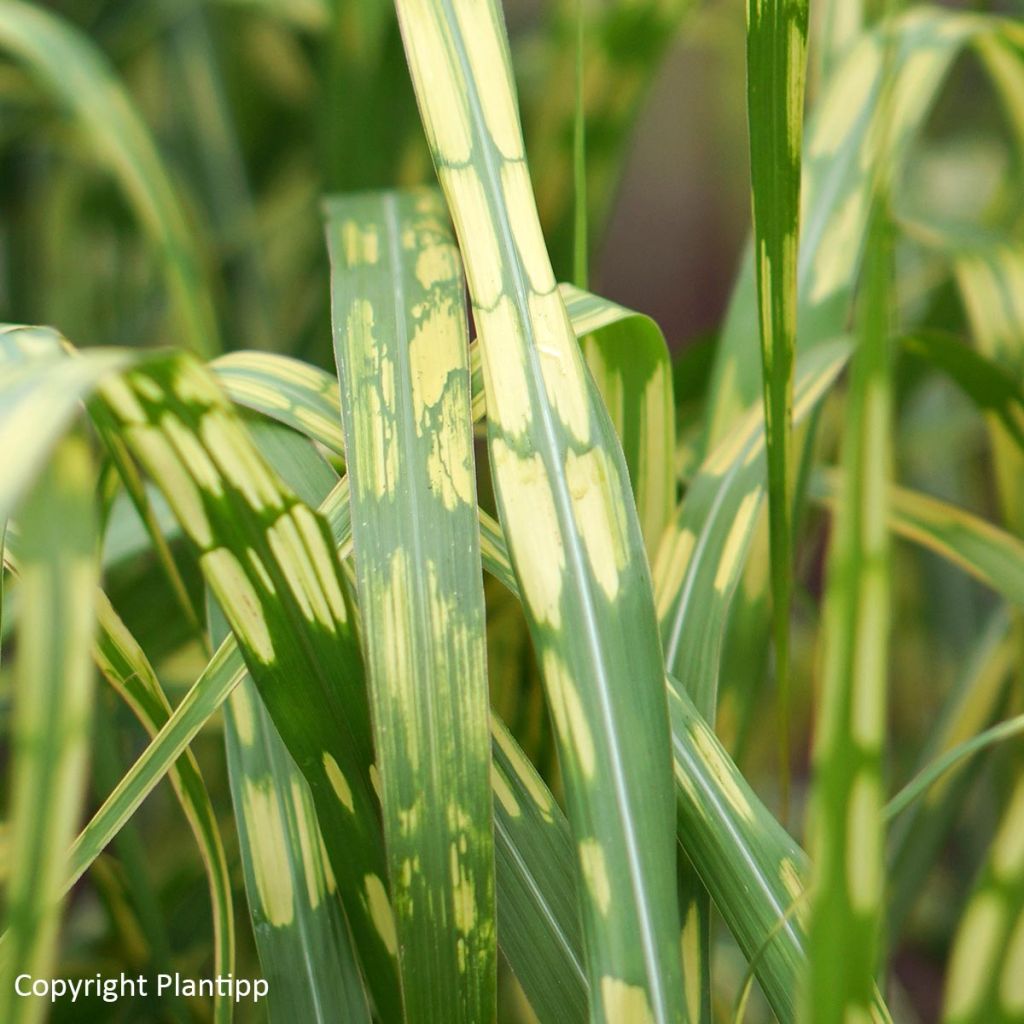

Miscanthus (x) giganteus Alligator - Roseau de Chine
Miscanthus giganteus Alligator
Miscanthus x giganteus Alligator
Giant Miscanthus, Elephant Grass
This item cannot be shipped to the selected country
Delivery charge from €5.90
More information
Schedule delivery date,
and select date in basket
This plant carries a 12 months recovery warranty
More information
We guarantee the quality of our plants for a full growing cycle, and will replace at our expense any plant that fails to recover under normal climatic and planting conditions.
From €5.90 for pickup delivery and €6.90 for home delivery
Express home delivery from €8.90.
Does this plant fit my garden?
Set up your Plantfit profile →
Description
Miscanthus x giganteus Alligator is a spectacular Chinese reed. It is a magnificent grass with unusual foliage that presents irregular horizontal yellow macules, resembling alligator skin. Its long trailing leaves gather at their tips to form a vigorous upright clump that stands out in the garden when its large white plume inflorescences appear in late summer. Make room for this giant grass and showcase it in the garden.
Miscanthus Alligator belongs to the Poaceae family. Its parent, M. x giganteus, better known as Elephant Grass, is the result of natural hybridisation between M. sinensis and M. sacchariflorus, two large species native to China and Japan. This large perennial and clump-forming (meaning its rhizomes do not spread) grass, with short rhizomes, forms a strong upright clump, easily reaching 2m (7ft) in height, with a spread of 1m (3ft). The leaves are thin and narrow, very long, slightly trailing at their tips, with a variegated medium green colour. Long flowering stems emerge from the foliage from September to November, in the form of silky digitate spikes, 30 to 40cm (12 to 16in) long, which are initially coloured brown-pink. When fading, they turn white-silver. The plumes consist of tiny pink flowers that close a little after opening, to reopen when mature. They then take on a paler and fluffier appearance. Its growth rate is quite rapid in moist and fertile soil. It dries up in winter, with new leaves emerging from the stump each spring.
Miscanthus Alligator is an architectural plant, which remains decorative for a large part of the year, including in winter where its silhouette catches the eye. It is ideal for large beds, to which its strong presence brings a beautiful structure and a lot of grace. It is also suitable for wild gardens and contemplative gardeners. Plant it among asters, behind perpetual roses. Watch it grow and fill out, play with the wind and the low autumn light, and bend under rain showers. This giant grass has its place in modern gardens with clean lines, in the company of bamboo or ferns if the soil is moist. Miscanthus are well suited for planting as a hedge, creating a screen along a path, to isolate a part of the garden, or simply to hide the view of the street or a neighbour's garden. In this use, they offer a somewhat unreal walk amidst their vegetation. These grasses bring volume and texture to garden boundaries, creating a natural transition to the open areas. In an urban garden, Miscanthus Alligator softens concrete structures. They can also be grown in large pots. They can be planted near water features, but in well-drained soil. They are also ideal for creating beautiful dried bouquets.
Some varieties of miscanthus are currently being studied, as they offer real prospects for the creation of standing crop or fibre panels. These plants have several advantages: they do not deplete the soil, tolerate polluted soils well, and can be incinerated or even used to produce biofuel.
Report an error about the product description
Flowering
Foliage
Plant habit
Botanical data
Miscanthus
x giganteus
Alligator
Poaceae
Giant Miscanthus, Elephant Grass
Cultivar or hybrid
Other Miscanthus
Planting and care
Miscanthus x giganteus Alligator thrives in sunny exposures and healthy, rich, and deep soil that is well-drained but remains moist in summer. This plant tolerates occasional drought if planted in deep soil. Cut back the foliage to ground level in early spring, after the strongest frosts have passed. For container planting, choose a large pot (minimum 45L) filled with a fertile, draining, and flexible growing medium. A mixture composed of 20% good garden soil, 20% draining elements (pumice or gravel or coarse river sand), and 60% horticultural compost is ideal. Apply well-decomposed compost once or twice a year (end of winter and autumn) or slow-release fertiliser.
Planting period
Intended location
Care
This item has not been reviewed yet - be the first to leave a review about it.
Coloured foliage perennials
Haven't found what you were looking for?
Hardiness is the lowest winter temperature a plant can endure without suffering serious damage or even dying. However, hardiness is affected by location (a sheltered area, such as a patio), protection (winter cover) and soil type (hardiness is improved by well-drained soil).

Photo Sharing Terms & Conditions
In order to encourage gardeners to interact and share their experiences, Promesse de fleurs offers various media enabling content to be uploaded onto its Site - in particular via the ‘Photo sharing’ module.
The User agrees to refrain from:
- Posting any content that is illegal, prejudicial, insulting, racist, inciteful to hatred, revisionist, contrary to public decency, that infringes on privacy or on the privacy rights of third parties, in particular the publicity rights of persons and goods, intellectual property rights, or the right to privacy.
- Submitting content on behalf of a third party;
- Impersonate the identity of a third party and/or publish any personal information about a third party;
In general, the User undertakes to refrain from any unethical behaviour.
All Content (in particular text, comments, files, images, photos, videos, creative works, etc.), which may be subject to property or intellectual property rights, image or other private rights, shall remain the property of the User, subject to the limited rights granted by the terms of the licence granted by Promesse de fleurs as stated below. Users are at liberty to publish or not to publish such Content on the Site, notably via the ‘Photo Sharing’ facility, and accept that this Content shall be made public and freely accessible, notably on the Internet.
Users further acknowledge, undertake to have ,and guarantee that they hold all necessary rights and permissions to publish such material on the Site, in particular with regard to the legislation in force pertaining to any privacy, property, intellectual property, image, or contractual rights, or rights of any other nature. By publishing such Content on the Site, Users acknowledge accepting full liability as publishers of the Content within the meaning of the law, and grant Promesse de fleurs, free of charge, an inclusive, worldwide licence for the said Content for the entire duration of its publication, including all reproduction, representation, up/downloading, displaying, performing, transmission, and storage rights.
Users also grant permission for their name to be linked to the Content and accept that this link may not always be made available.
By engaging in posting material, Users consent to their Content becoming automatically accessible on the Internet, in particular on other sites and/or blogs and/or web pages of the Promesse de fleurs site, including in particular social pages and the Promesse de fleurs catalogue.
Users may secure the removal of entrusted content free of charge by issuing a simple request via our contact form.
The flowering period indicated on our website applies to countries and regions located in USDA zone 8 (France, the United Kingdom, Ireland, the Netherlands, etc.)
It will vary according to where you live:
- In zones 9 to 10 (Italy, Spain, Greece, etc.), flowering will occur about 2 to 4 weeks earlier.
- In zones 6 to 7 (Germany, Poland, Slovenia, and lower mountainous regions), flowering will be delayed by 2 to 3 weeks.
- In zone 5 (Central Europe, Scandinavia), blooming will be delayed by 3 to 5 weeks.
In temperate climates, pruning of spring-flowering shrubs (forsythia, spireas, etc.) should be done just after flowering.
Pruning of summer-flowering shrubs (Indian Lilac, Perovskia, etc.) can be done in winter or spring.
In cold regions as well as with frost-sensitive plants, avoid pruning too early when severe frosts may still occur.
The planting period indicated on our website applies to countries and regions located in USDA zone 8 (France, United Kingdom, Ireland, Netherlands).
It will vary according to where you live:
- In Mediterranean zones (Marseille, Madrid, Milan, etc.), autumn and winter are the best planting periods.
- In continental zones (Strasbourg, Munich, Vienna, etc.), delay planting by 2 to 3 weeks in spring and bring it forward by 2 to 4 weeks in autumn.
- In mountainous regions (the Alps, Pyrenees, Carpathians, etc.), it is best to plant in late spring (May-June) or late summer (August-September).
The harvesting period indicated on our website applies to countries and regions in USDA zone 8 (France, England, Ireland, the Netherlands).
In colder areas (Scandinavia, Poland, Austria...) fruit and vegetable harvests are likely to be delayed by 3-4 weeks.
In warmer areas (Italy, Spain, Greece, etc.), harvesting will probably take place earlier, depending on weather conditions.
The sowing periods indicated on our website apply to countries and regions within USDA Zone 8 (France, UK, Ireland, Netherlands).
In colder areas (Scandinavia, Poland, Austria...), delay any outdoor sowing by 3-4 weeks, or sow under glass.
In warmer climes (Italy, Spain, Greece, etc.), bring outdoor sowing forward by a few weeks.


































